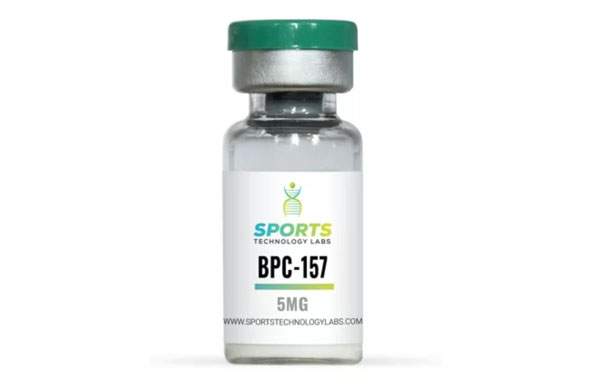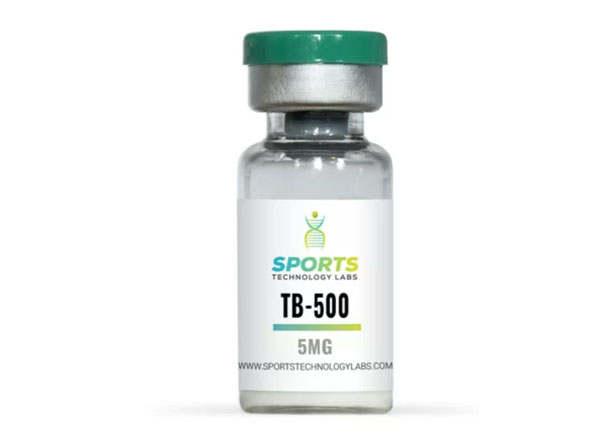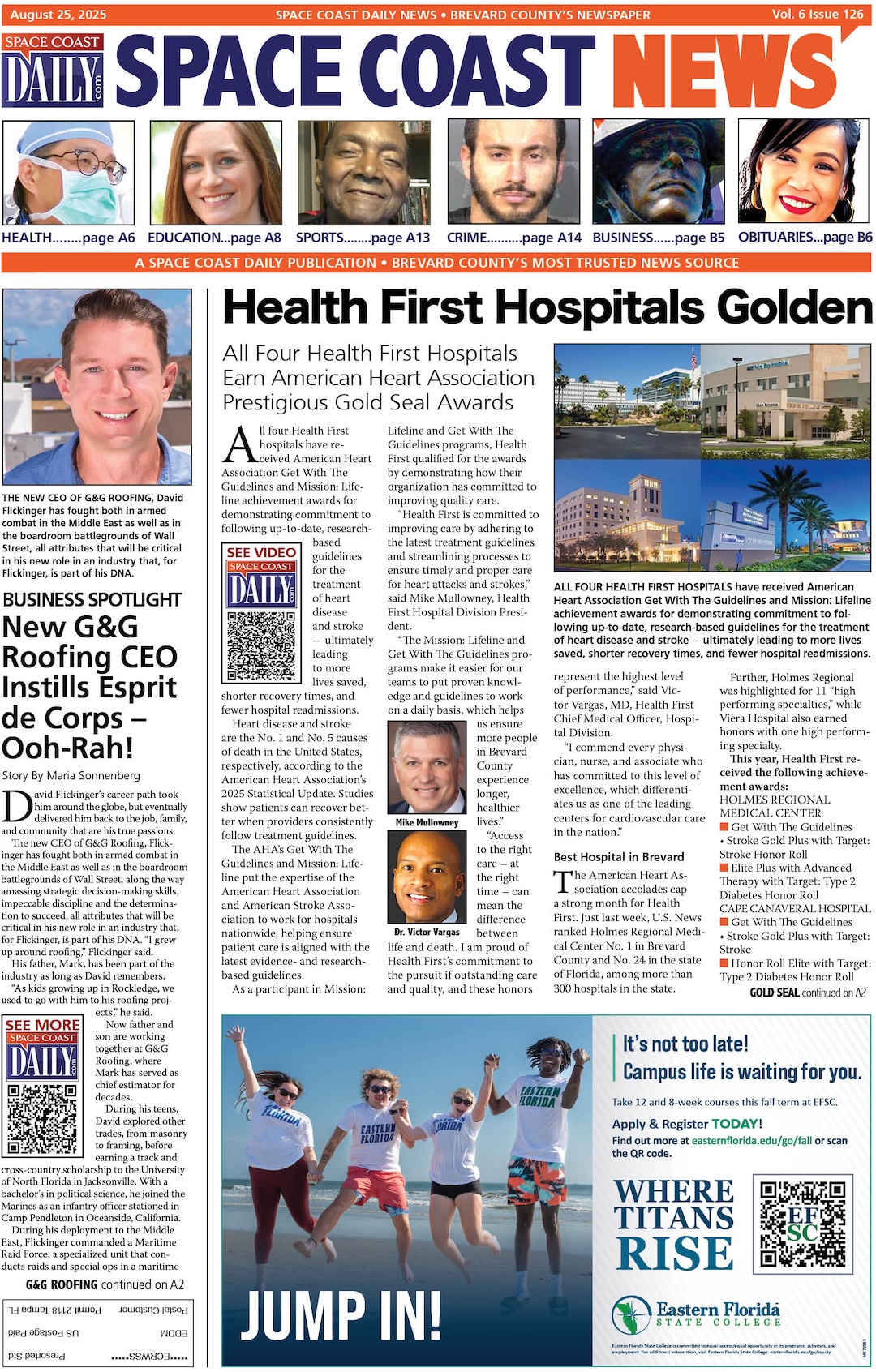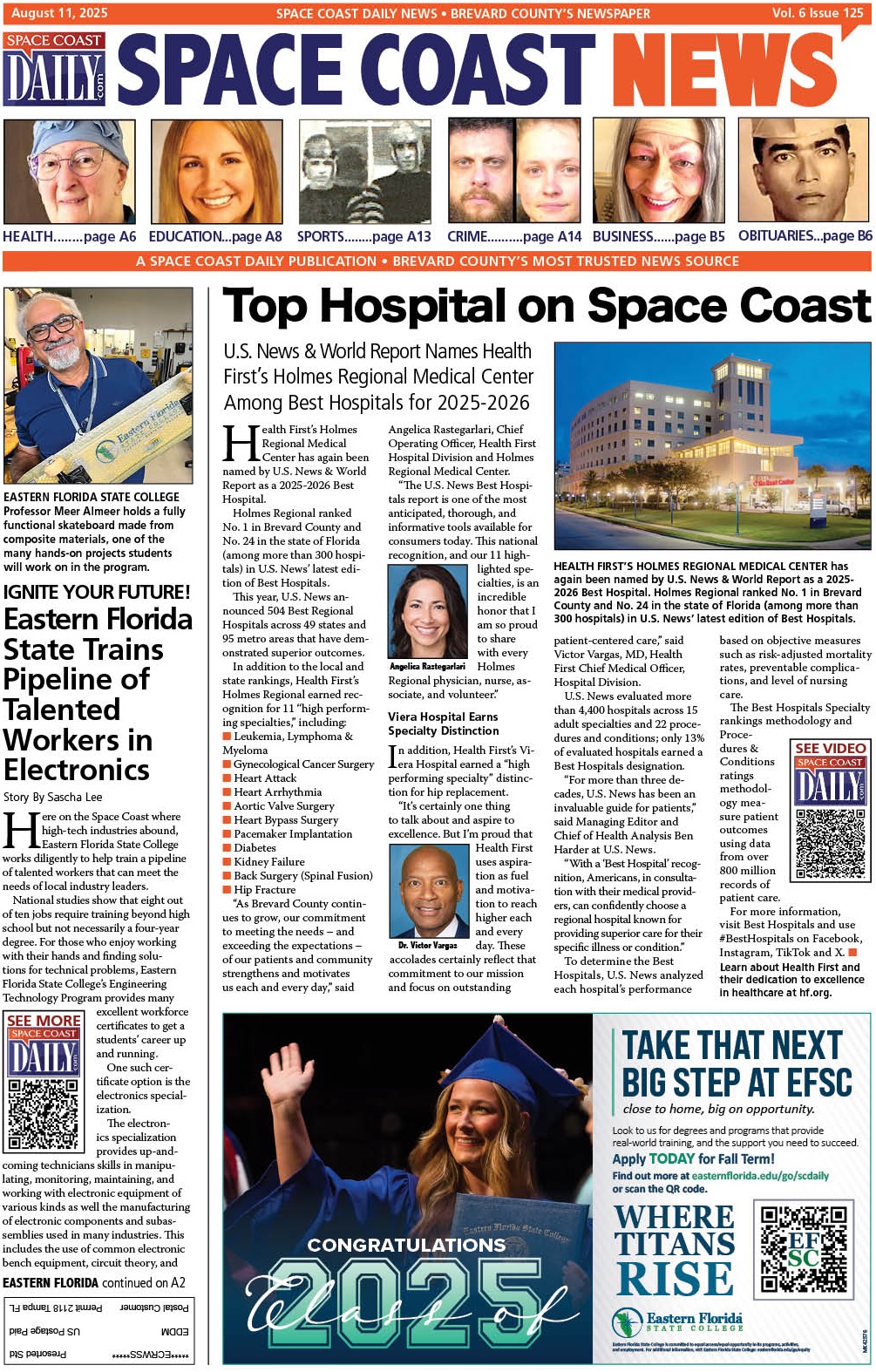BPC-157 and TB-500 Peptide Blend Review
By Space Coast Daily // May 13, 2024

BPC-157 and TB-500 are two peptides that have recently begun to gain a significant amount of attention in the health and fitness spaces due to their potential healing abilities.
BPC-157, often referred to as a “body protection compound,” has shown tremendous potential in enhancing recovery from injuries, particularly in soft tissues.
In addition, a synthetic version of the naturally occurring thymosin beta-4 called TB-500 has been praised for its incredible impact on injury recovery and inflammation reduction.
In this review, we’re going to dive into the science behind BPC-157 and TB-500, covering its mechanism of action, potential benefits, and more.
A Closer Look At BPC-157
Note: Click Here Now to pick up BPC-157 from our top rated source.
BPC-157, classified as a body protection compound, is a fully synthetic peptide made up of 15 amino acids, and it’s derived from a specific protein found in the stomach, which has been extensively studied for its potential regenerative effects.
BPC-157 is particularly notable for its healing properties, which encompass a relatively wide range of bodily processes, and it promotes the repair of tissues that include tendons, muscles, bones, and even nervous system tissues.1
The mechanism through which BPC-157 can work is complex, and primarily it boosts the expression of various growth factors such as VEGF, which are important for the formation of new blood vessels, a biological process known as angiogenesis.2
Additionally, BPC-157 helps stimulate the upregulation of anti-inflammatory meditators and concurrently reduces the expression of inflammatory cytokines, which not only speeds up healing but also reduces pain and swelling, helping provide relief from the symptoms of injuries and inflammation.3
Research into BPC-157 has shown some incredibly promising results that span multiple applications, with initial animal models showing effectiveness in speeding up healing in tendon and bone tissues.4
It’s also shown protective effects against stomach ulcers, reflecting a potential for GI health improvement.5
While human trials are more limited, they do exist and have shown positive outcomes as well, including results that indicate BPC-157 can help heal burns, lacerations, and tendon tissues faster than otherwise.6

A Closer Look At TB-500
Special Note: Click Here Now to pick up TB-500 from our top rated source.
TB-500, also known as thymosin beta-4, is a fully synthetic version of a peptide that occurs naturally in the body and plays an important role in the protection, regeneration, and remodeling of injured or damaged tissues.7
TB-500 is primarily recognized for its healing benefits, which include the ability to increase cell-building proteins like actin, which is a critical component of the cell structure.8
The presence of TB-500 in the system promotes actin upregulation, which then boosts cell migration and proliferation, all of which lead to accelerated healing processes and elevated levels of cellular growth, all vital for injury recovery.9
One of the most notable and unique features of TB-500 is the molecular structure that allows it to travel long distances through the tissues themselves, which enhances its effectiveness in cardiovascular and systemic applications since it can circulate throughout the body and find areas of damage in which to intervene.
The research into TB-500 has also shown significant results in both animal and human models, with animal models demonstrating acute healing capacity, and human studies, while more sparse, show benefits of recovery enhancement from muscle tears, tendinopathy, and loss of flexibility from inflammation.10 11
The molecular design allows TB-500 to be very effective at tissue penetration and crossing the blood-brain barrier, which can help support neurological protection and recovery as well.12
Synergistic Effects of BPC-157 and TB-500
Combining BPC-157 and TB-500 can offer substantial synergistic effects that boost the healing and recovery benefits well beyond the individual capabilities of either compound by itself.
BPC-157 is known for its potent angiogenic properties, which increase the rate of new blood vessel formation to elevate blood supply to injured areas, which results in increased delivery of essential nutrients, oxygen, and other recovery components.
On the other hand, TB-500 leads in promoting cell migration and differentiation, both of which are critical processes for rebuilding damaged tissues and recovering from injuries, while its ability to modulate actin helps make sure that new cells are incorporated into the healing tissue, improving its overall structure and function.
When BPC-157 and TB-500 synergize, it creates incredible benefits in situations involving chronic injuries or severe tissue damage, where accelerated healing is needed.
The combined effects speed up the core healing processes but also lower the risk of potential recurrence by increasing the strength of the tissues as well as improving their resilience.
This complementary interaction makes the combination of BPC-157 and TB-500 a powerful tool in both therapeutic and athletic spaces, where faster recovery and optimal physical performance are highly sought after.
Safety and Side Effects
BPC-157 and TB-500 are both generally considered to be safe and largely well-tolerated by those who use them, primarily due to their biocompatibility and the body’s natural familiarity with peptide-based processes and structures.
That said, there is the potential for side effects to occur with higher doses or more sensitive individuals, with the most common side effects including nausea, headache, and dizziness.
Since both BPC-157 and TB-500 influence important biological processes, it’s critical to only administer them under trained supervision, particularly for individuals with underlying health conditions.
Also, just like with any injectable therapeutic, there’s the risk of irritation at the injection site, so redness, itching, and minor swelling should not be cause for concern, but there is also the potential for infection if safe injection practices are not followed.
Finally, users should always be cautious about potential allergic reactions and always conduct a patch test in a controlled environment to ensure there are no adverse reactions.
How BPC-157 and TB-500 Compare to Other Healing-Related Peptides
BPC-157 and TB-500 are typically mentioned in the context of other healing peptides like GHK-Cu, and collagen peptides, due to their similarities in regenerative functionality, but while GHK-Cu is lauded for its anti-aging and physical wound healing capacities and collagen peptides are known for boosting skin and joint health, BPC-157 and TB-500 offer distinct and notable advantages over them all in promoting more rapid and efficient tissue repair.
GHK-Cu acts by promoting collagen and glycosaminoglycan synthesis, which boosts skin elasticity and helps reduce healing time on open wounds.
Collagen peptides, on the other hand, help keep the body supplied with the components needed to create new collagen, which works to maintain cartilage integrity, skin health, and bone health.
BPC-157 and TB-500, however, both offer leading rapid recovery scenarios, particularly where muscle or tendon tissues are concerned, by directly influencing cellular migration and angiogenesis, which makes them highly valuable in the sports medicine space, as well as in the treatment of any condition that involves chronic pain from inflammation.
Wrapping Up
Note: Click Here Now to pick up BPC157 and TB500 from our top rated source.
BPC-157 and TB-500 are both incredibly powerful peptides in their own right, with each one offering significant benefits for tissue repair, recovery, and general healing.
The effects when the two compounds are synergized, however, can enhance the body’s natural healing processes even further, making them two of the best choices for anyone looking for effective ways to boost healing and shorten recovery times.
The safety profiles of both are respectable and show that they are well-tolerated, generally, though anyone considering adding them to their fitness, wellness, or therapeutic regimen should consult with a trusted healthcare provider first, and always ensure the compounds are sourced from the most reputable suppliers.
With proper use and intelligent dosage, BPC-157 and TB-500 can become integral components of a comprehensive and well-rounded health optimization strategy.
References
- Vukojevic J, Milavić M, Perović D, Ilić S, Čilić AZ, Đuran N, Štrbe S, Zoričić Z, Filipčić I, Brečić P, Seiverth S, Sikirić P. Pentadecapeptide BPC 157 and the central nervous system. Neural Regen Res. 2022 Mar;17(3):482-487. doi: 10.4103/1673-5374.320969. PMID: 34380875; PMCID: PMC8504390.
- Brcic L, Brcic I, Staresinic M, Novinscak T, Sikiric P, Seiwerth S. Modulatory effect of gastric pentadecapeptide BPC 157 on angiogenesis in muscle and tendon healing. J Physiol Pharmacol. 2009 Dec;60 Suppl 7:191-6. PMID: 20388964.
- Jung YH, Kim H, Kim H, Kim E, Baik J, Kang H. The anti-nociceptive effect of BPC-157 on the incisional pain model in rats. J Dent Anesth Pain Med. 2022 Apr;22(2):97-105. doi: 10.17245/jdapm.2022.22.2.97. Epub 2022 Mar 25. PMID: 35449779; PMCID: PMC8995671.
- Chang CH, Tsai WC, Lin MS, Hsu YH, Pang JH. The promoting effect of pentadecapeptide BPC 157 on tendon healing involves tendon outgrowth, cell survival, and cell migration. J Appl Physiol (1985). 2011 Mar;110(3):774-80. doi: 10.1152/japplphysiol.00945.2010. Epub 2010 Oct 28. PMID: 21030672.
- Xue XC, Wu YJ, Gao MT, Li WG, Zhao N, Wang ZL, Bao CJ, Yan Z, Zhang YQ. Protective effects of pentadecapeptide BPC 157 on gastric ulcer in rats. World J Gastroenterol. 2004 Apr 1;10(7):1032-6. doi: 10.3748/wjg.v10.i7.1032. PMID: 15052688; PMCID: PMC4717094.
- Chang CH, Tsai WC, Hsu YH, Pang JH. Pentadecapeptide BPC 157 enhances the growth hormone receptor expression in tendon fibroblasts. Molecules. 2014 Nov 19;19(11):19066-77. doi: 10.3390/molecules191119066. PMID: 25415472; PMCID: PMC6271067.
- Malinda KM, Sidhu GS, Mani H, Banaudha K, Maheshwari RK, Goldstein AL, Kleinman HK. Thymosin beta4 accelerates wound healing. J Invest Dermatol. 1999 Sep;113(3):364-8. doi: 10.1046/j.1523-1747.1999.00708.x. PMID: 10469335.
- Maar K, Hetenyi R, Maar S, Faskerti G, Hanna D, Lippai B, Takatsy A, Bock-Marquette I. Utilizing Developmentally Essential Secreted Peptides Such as Thymosin Beta-4 to Remind the Adult Organs of Their Embryonic State-New Directions in Anti-Aging Regenerative Therapies. Cells. 2021 May 28;10(6):1343. doi: 10.3390/cells10061343. PMID: 34071596; PMCID: PMC8228050.
- Ho EN, Kwok WH, Lau MY, Wong AS, Wan TS, Lam KK, Schiff PJ, Stewart BD. Doping control analysis of TB-500, a synthetic version of an active region of thymosin β₄, in equine urine and plasma by liquid chromatography-mass spectrometry. J Chromatogr A. 2012 Nov 23;1265:57-69. doi: 10.1016/j.chroma.2012.09.043. Epub 2012 Sep 23. PMID: 23084823.
- Treadwell T, Kleinman HK, Crockford D, Hardy MA, Guarnera GT, Goldstein AL. The regenerative peptide thymosin β4 accelerates the rate of dermal healing in preclinical animal models and in patients. Ann N Y Acad Sci. 2012 Oct;1270:37-44. doi: 10.1111/j.1749-6632.2012.06717.x. PMID: 23050815.
- Rahaman KA, Muresan AR, Min H, Son J, Han HS, Kang MJ, Kwon OS. Simultaneous quantification of TB-500 and its metabolites in in-vitro experiments and rats by UHPLC-Q-Exactive orbitrap MS/MS and their screening by wound healing activities in-vitro. J Chromatogr B Analyt Technol Biomed Life Sci. 2024 Mar 1;1235:124033. doi: 10.1016/j.jchromb.2024.124033. Epub 2024 Feb 7. PMID: 38382158.
- Xiong Y, Mahmood A, Meng Y, Zhang Y, Zhang ZG, Morris DC, Chopp M. Neuroprotective and neurorestorative effects of thymosin β4 treatment following experimental traumatic brain injury. Ann N Y Acad Sci. 2012 Oct;1270:51-8. doi: 10.1111/j.1749-6632.2012.06683.x. PMID: 23050817; PMCID: PMC3547647.












